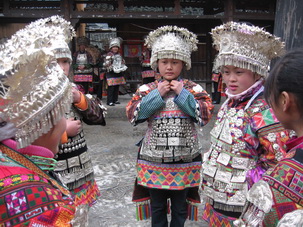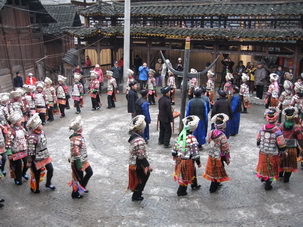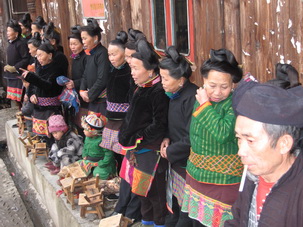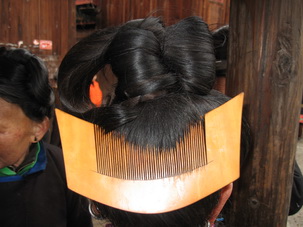
 China Tours
China Tours Tibet Tours
Tibet Tours China Theme Tours
China Theme Tours Off The Beaten Track
Off The Beaten Track Yangtze Cruises
Yangtze Cruises China Trip Planner
China Trip Planner Travel Agents
Travel Agents


We had a wonderful time in Tibet. We have learned a lot about this unique destination because of the wonderful guide Degyi who is so knowledge and always available towards our tours. We stayed at the Shangri-La Hotel Lhasa, and we would never imagine a Tibet travel could be so nice and amazing without the help of Degyi.
Also, thanks a lot to our Tibetan driver Mr.Wongdun for his safe driving and a good sense of service along the way.
We shall return Tibet in the near future!
P.B. and A. A - Europe
Tibet Travel
June 2018 (Private Tibet Journey from Kathmandu)

 Kaili is the gateway to the minority areas of southeast Guizhou and also is regarded as home to hundred festivals activities due to colorful folk culture and many folk holidays here, such as, Miao nian, Papo, Chixin, etc. Tourists from home and abroad can enjoy different folk customs here.
Kaili is the gateway to the minority areas of southeast Guizhou and also is regarded as home to hundred festivals activities due to colorful folk culture and many folk holidays here, such as, Miao nian, Papo, Chixin, etc. Tourists from home and abroad can enjoy different folk customs here. Diversified cultures honor the southeast of Guizhou province one of 18 minority culture protection regions. Ancient history, special historical sites and places of interest make it a popular destination of tourism. There are numerous ancient towns and splendid cultural relics here. The southeast of Guizhou province is also characterized by the famed mountains, which are famous for grandness, danger, ruggedness and beauty. Rivers here are incised after long-term corrosion and shape lots of deep gorges.
 Jidao Miao Village
Jidao Miao Village
Located in China's southwestern province of Guizhou, Jidao Miao village is set in idyllic surroundings and populated by ethnic Miao people. Village life is simple and children play as their parents tend fields of lush, organically grown vegetables surrounded by towering pine forests. Elderly women stoke fires in traditional wooden houses, some hundreds of years old. It is so poor, mountainous and remote that the tranquility here is not yet broken by a flood of rich Chinese tourists and foreign visitors.
Datang Miao Village
Datang Miao Ethnic village is famous for its distinctive style short skirt wore by Miao female. The Miao miniskirt, measures 16 centimeters in length, but is made from 7 meters of local cloth. At each festival, women often dress their hand-making miniskirt to dance. Dances are held in the village square. A huge gong is tied to a wooden post in the middle of the square. An all-male band of Lusheng players, with the bandleader also in charge of striking the gong, plays for an all-female group of dancers.
The lushly dressed female dancers, whose total number can reach 100, move in lines and circles, forming different patterns. Their bodies, adorned with silver headwear, necklaces, bangles, and anklets become musical instruments as well, emitting a metallic melody in sync with the rhythm of their footsteps. The most popular dances include The Pheasant Dance, The Wooden Stool Dance, and The Joyful Children Dance. Guests can participate in the dances.
Basha Miao Village
Lying on the southern border Guizhou, Basha village is famed for being China 's last tribe of gunmen. This primitive miao village is hidden away in a forest and filled with stilted wooden houses by the river.
tribe of gunmen. This primitive miao village is hidden away in a forest and filled with stilted wooden houses by the river.
Basha village is home to over 1,000 residents living in more than 400 households. Their ancestors were frontline troops who charged through forests and fought the bears there -- all to guard the land where they lived. Through hundreds of years, they have been guarding their homeland. Still today the men in Basha preserve their musketeer heritage, which makes Basha the only tribe that can legally carry real guns in China. A strong sense of precaution inherited from their ancestors keeps this village isolated from the outside world. The villagers lead a self-sufficient life in the hilly areas and retain the dressing and living customs hundreds of years ago.The villagers in Basha worship trees, especially maples, as gods. They believe the buns on their heads represent trees, while the purple clothes they wear represent bark. (The color is a special bluish purple. Biasha people usually add egg whites into the indigo when dying the coarse cloth, making it shiny and waterproof.) In Basha, a tree is planted whenever a baby is born. Often it will be cut down to make the coffin when the person eventually dies. Cutting down ancient trees is forbidden in the village.
Basha men are also famous for their unique hairstyles. Like the men in the Qing dynasty, Basha men wear their long hair in braids. They attach great importance to their hair bun, which they believe is a symbol of masculinity, as well as an emblem of power. This is a hairstyle that 's existed for thousands of years.
Young boys have to take part in a shaving ceremony between the ages of seven and fifteen. The tribe leader wets a sickle with the water used to boil eggs, and shaves off all of the boy's hair except for the central part, which is coiled into a bun. The blade caresses the scalp, and patches of hair fall to the ground. This shave is done without any shaving cream, or even a rinse. Boys get their first haircuts as a rite of passage, and then are given a hunting rifle at the age of 15 as a sign that they've become adults.
 Xijiang Village
Xijiang Village
Located in southeast of Kaili, Xijiang is has the largest Miao community in China, where more than 1000 Miao families (population approx. 6000) are living here. It is surrounded by mountains and rivers. The huge village itself is just like a forest of Miao wooden cabins built from the foot to the mountain top.
Xijiang is also called as the Capital of Miao due to its grandeur. Many scholars regard it as the Gallery of Miao Folk Art and the Living Fossil of Miao history and culture. Tourists will not only see their unique architectures, but also their ways of life. One of the villages has the best Miao silver smith, producing all kinds of silverwares for their people.
The Miaos love dancing and singing. Their songs are attractive and embody their culture, history and human feeling, which are passed from generation to generation. It includes wine songs, love songs, folk songs and so on. Love songs are characterized by its fair-sounding tune; folk songs are characterized by its loud and sonorous tune.
China Trip Planner | Travel Agents | About Us | Why Us | Contact Us | How to Pay | How to Book - Terms & Conditions | Site Map
Copyright © 2010 - 2030 All Rights Reserved.


 0086-28-85711328
0086-28-85711328 0086-28-85546015
0086-28-85546015



